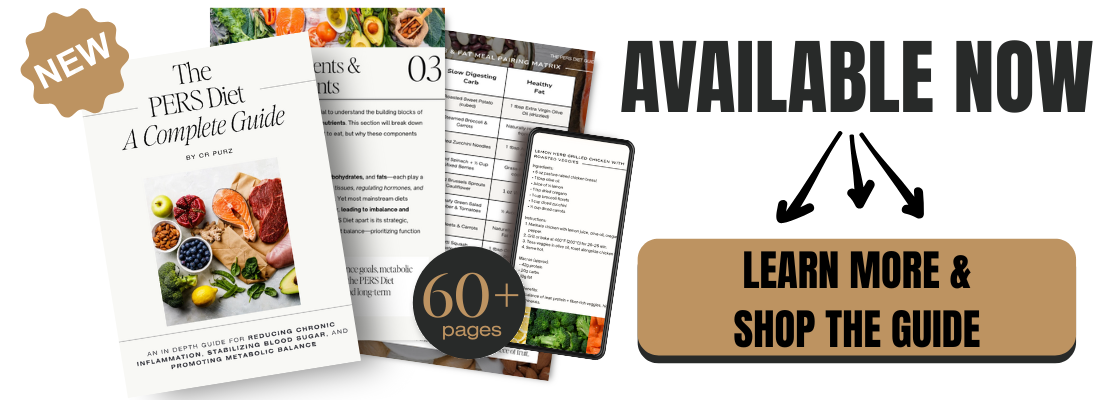Burn Fat, Keep Muscle: The Blueprint Nobody Tells You About
How to Keep Muscle While Losing Fat: A Simple Blueprint
Let's be real: losing fat without losing muscle is where the real game is won.
Most people who "diet" end up smaller, but softer. We’ve all seen it — the "skinny fat" look. They lose weight, but because they lost muscle along with fat, they end up with a slower metabolism, lower strength, and honestly, worse health.
That’s not the goal here.
The goal is to burn fat while preserving muscle — or even building some muscle in the process. True health, real strength, and a metabolism that’s working for you, not against you.
Here's how you do it.
FACTS You Need to Know First
Muscle is metabolically active. The more muscle you have, the more calories you burn even at rest.
Severe calorie cuts eat muscle, not just fat. Extreme diets aren't "heroic" — they're damaging.
Protein is your muscle insurance. Without enough protein, your body pulls amino acids from muscle tissue.
Strength training signals your body to keep muscle. If you stop lifting while dieting, your body has no reason to hang onto it.
The Simple Blueprint: How to Keep Muscle While Losing Fat
1. Prioritize Protein.
Aim for at least 1 gram of protein per pound of bodyweight. For some, 1.2g/lb during a cut is even better. No skipping meals. Hit that protein target daily.
2. Strength Train Hard.
Lift heavy enough that your body needs that muscle. Focus on compound movements (squats, deadlifts, rows, presses) and progressive overload. No "just cardio" cuts allowed.
3. Use Cardio Strategically, Not Excessively.
Cardio is a tool, not a punishment. 2-4 sessions a week of moderate-intensity cardio (or even low-intensity walking) is smart. Hammering high-intensity cardio daily will burn out muscle.
4. Don't Slash Calories to the Bone.
You need a moderate deficit — about 15-20% below maintenance calories. Bigger deficits = bigger muscle loss.
5. Supplement Smarter.
Essentials during a cut:
Creatine (5g/day)
Whey protein or collagen to help hit protein needs
Omega-3s for recovery and inflammation control
6. Sleep and Recovery Matter Big Time.
6 hours of sleep and high stress = recipe for muscle loss. Prioritize recovery just like you prioritize your workouts.
Why This Matters: Beyond Looks
Preserving muscle = preserving strength.
Preserving muscle = faster metabolism.
Preserving muscle = better blood sugar control.
Preserving muscle = healthier aging.
This is about longevity. About being able to move, lift, and live better for the long haul.
You don't just want to lose "weight." You want to lose fat — while keeping your powerhouse muscle tissue locked in.
FAQ: Muscle Preservation During Fat Loss
Q: Can I build muscle while losing fat?
A: If you're newer to strength training or cleaning up your diet, yes — "body recomposition" is very possible. If you're more advanced, it’s tougher but you can maintain all your muscle while cutting fat.
Q: How much protein do I really need?
A: Minimum 1 gram per pound of bodyweight. Some people do better around 1.2 grams, especially if in a deep calorie deficit.
Q: Should I do fasted cardio?
A: Not necessary. What's more important is total weekly calorie balance and strength preservation. Fasted cardio is a tool — not a requirement.
Q: What if the scale isn't moving much?
A: If you're getting leaner in the mirror, clothes fitting better, strength holding steady or improving — you're winning. Scale weight can lie.
Q: Do I have to track calories?
A: You don’t have to — but precision speeds results. Even a basic ballpark understanding will help prevent muscle loss from undereating.
Final Takeaway
Losing fat without losing muscle isn't about starving yourself or living on a treadmill.
It's about:
Smart eating
Smart lifting
Smart recovery
Muscle is your armor for life. Protect it. Build it. Move through life strong and capable.
If you want the roadmap to doing this right, check out my supplement guide and inflammation reset over at the shop— because it's not just about weight loss.
It's about total optimization.

